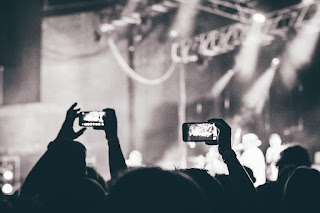Mario Nenadic Perth| Wildlife Photography Tips Tips You Need To Learn Now
Mario Nenadic Perth the world best wild life photographer ready to helps you with his tremendous knowledge of wildlife photography. Here in this blog Mario Nenadic offers you best wildlife photography tips.
Before you start
Check the weather forecast and prepare accordingly. Think about waterproofs (for you and your camera) or sun-block and a lens hood for the summer days.
Pick a topic, theme or subject and then work that subject, capturing in it in a variety of ways. If you're stuck for inspiration then look at the local nature activities happening near to you.
Take a tripod, if you have one or can borrow one. Wildlife pictures are often on maximum zoom and/or in shady, darker areas and this can lead to camera shake and blurry pictures if you are hand holding your camera.
When you're out
Be patient, expect to spend long periods waiting for that 'picture'! Remember to take some food and drink to keep you going. If the subject you have chosen isn't doing anything don't just move on. Sit still, watch and wait. The best wildlife photography shots often coincide with hours spent sitting and waiting. Anything can happen at any time but most things happen rarely or not when you expect them to. Spend some time getting to know your subject and if necessary spend days returning to the same place and watching their behavior and perhaps you will be able to work out some patterns and predict what they might do!
Take a pair of binoculars so you can look around you and make sure that you don't miss anything!
Get down on the subjects eye-level, it really changes the perspective and brings something special to the shot.
A great way to capture the wildlife is to get a nice big close up, so how can you achieve this?
1. Move closer to the subject but this may not always be possible as it could scare your subject away.
2. Use the camera and zoom-in, either by altering the focal length of your DSLR lens or by making use of the optical zoom on your compact camera. Do not use the digital zoom; it makes the pictures pixelated and really poor quality.
3. Use your binoculars. Put the lens of your camera against one of the eye-pieces of your binoculars, focus the camera and then take your pictures. It does take some practice but the pictures are great once you get it right.
A lot of cameras come with a remote trigger and using it is a great way to take shots without scaring everything away. Set up your camera on a tripod and then position yourself some distance away but within eyesight. Press your trigger when birds or animals come near, you'll be amazed at the results you can get.
Light
Try to avoid the middle of the day as the sun can be very bright, it can cause harsh shadows, burnt out colours and lens flare. The light around sunrise and sunset has the most beautiful golden glow and as the sun is low it comes from the side rather than directly from above. The shadows are much softer and can give shape, form and dimension to your picture. Don't worry if it is an overcast day. Photographers call this type of light 'God's soft-box'. Colors are strong and true, there are no harsh shadows and you don't have to worry what direction you are shooting in.
If you are out and have forgotten your tripod, then improvise! Use a wall, a fence or similar. Invest in a small beanbag. They're not expensive and really help when you are using a wall and need to alter the position of you camera, for example tilting it forward to compose the shot to include everything you want.
The action of pressing the shutter button on the camera will move the camera and could cause it to wobble; this can make your pictures a little blurry especially if your shutter speed is on the low side. If you have a cable release or remote trigger for your shutter then use it as it will mean that your camera is completely still when you press the shutter. If you don't have either of these then use timers on your camera and it should be still by the time the shutter operates and the picture is taken.
A good way to start and 'learn the trade' is by using your own garden. You can set up your camera, trained on a bird table say, in the comfort of your own home. Make sure that the windows are clean though. You can then practice in the warm and dry and get some great shots of popular garden wildlife.
The last tip is the most important! Wherever you are photographing wildlife whether it's at your local park stalking squirrels or in the Masai Mara watching lions and elephants then don't forget to enjoy what you are seeing. Take in the moments you are witness to, enjoy nature in all its glory but keep taking pictures!
For More information and tips keep following Mario Nenadic Perth.



Comments
Post a Comment